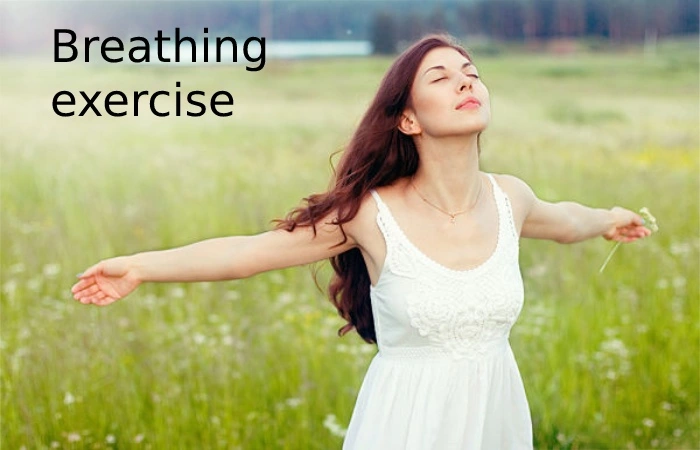Breathing exercise can be helpful to relax you and relieve stress, difficulty falling asleep, feeling of pressure, etc. These exercises are also practical tools for therapists.

especially for anxiety disorders; some techniques may sound familiar to you. However, all it takes is a relatively healthy pair of lungs, your breathing, and 10 minutes or less. That is why I am teaching you these 6 techniques from yoga, meditation, and even therapists of varying degrees of difficulty that will allow you to find peace without having to go to a spa.
Table of Contents
Breathing Exercise Basics: What You Need To Know
Do not wait until this fight or flight state. Skillful breathing not only keeps your mind and body going but can also lower blood pressure, promote a sense of calm and relaxation, and even help reduce stress.
While the effects of breathing techniques on anxiety are far from being investigated (at least in controlled clinical settings), many experts recommend using breathing as a resource for increasing awareness or mindfulness.
Thoughts on Matter: Your Plan of Action
Consider these 6 techniques to help you keep calm and move on in your bedroom, office, or anywhere negativity creeps in.
Same Verity or “just Breathing Exercise”
That is how it works: Balance can be good for the body, starting with breathing. Inhale at the beginning, count to four and then exhale to four as well (all through your nose, which creates a natural breathing resistance). Did you learn the basics?
Most advanced yoga practitioners can aim for 6- or 8-point breath with the same goal in mind: calming the nervous system, increasing focus, and relieving stress.
When it works best: Anytime, anywhere, but exceptionally effective before bed. “Similar to counting sheep,
a yoga instructor: “If you are having trouble falling asleep, this breath can help your mind separate from racing thoughts or anything that distracts you from falling asleep.”
Abdominal Breathing Techniques
Breathe thumb
Here’s how: With one hand on your chest and the other on your stomach, inhale deeply through your nose, making sure that the diaphragm (not the chest) is inflated with enough air to cause the lungs to expand. The goal: 6 to 10 slow breaths each minute for 10 minutes a day to experience an immediate lowering of blood and heart pressure.
A respiratory specialist. Do this exercise for 6 to 10 weeks, and the benefits may last lengthier.
Once it works best: before an exam or a stressful event, but remember: “Those who constantly operate under stress will be surprised how difficult it is to control their breathing,” says Pacheco.
Beginners.
Nadim Shoshana or “alternate breathing through the nose.”
How to do it: It is a yoga practitioner’s best friend as this breathing is said to bring calm and balance and unite the left and suitable brain regions. Starting with a comfortable meditation position, take your right thumb, place it on your right nostril, and take a deep breath through your left nostril. At the height of your inhalation, clog your left nostril and then exhale through your right nostril. Continuing with this pattern, inhale through your right nostril, close it with your right thumb, and exhale through your left nostril.
Progressive Relaxation
Is how it works: To relieve tension from head to toe, close your eyes and concentrate on tensing and relaxing each muscle group for two to three seconds at a time. Jump with your feet and toes, then move to your knees, thighs, buttocks, chest, arms, hands, neck, jaw, and eyes (all holding deep, slow breathing). Are you having problems with this exercise? The anxiety and panic specialist
Suggests that we breathe in through our noses, count to 5 while tensing our muscles, finally venting the air through our mouths.
When it works best: at home, in the office, or on the go. One caveat: vertigo is never the goal; If holding your breath is uncomfortable, lower the pitch for at least a few seconds.
